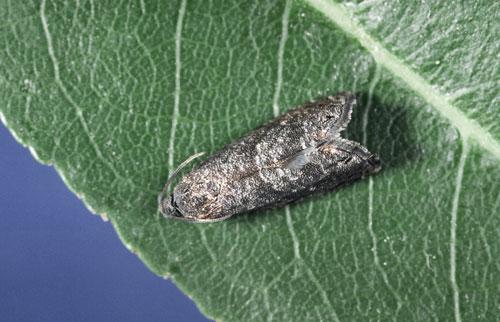Oriental fruit moth

There are usually five generations per year in California, although a sixth generation has been observed in years with warm weather in early spring. Oriental fruit moth overwinter as mature, diapausing larvae inside tightly woven cocoons in protected places on the tree or in the trash near the base of the tree. In early spring, pupation takes place inside the cocoon and adults begin emerging in February or early March. Eggs are deposited on newly emerged shoots and the larva feed in terminals where they complete their development. Second generation larvae feed in shoots, but fruit of some of the earlier maturing peach cultivars may also be attacked. Subsequent generations may attack shoot terminals and green fruit, but as fruit matures it becomes the preferred site of attack by this pest.
Generally oriental fruit moth larvae bore deeper into the shoot than peach twig borer larvae do. If the larvae are still present, cut strikes open to determine if the infestation is oriental fruit moth or peach twig borer.
(Description from UC Pest Management Guidelines)
Monitoring information
| Week of | Pheromone trap |
Bait bucket |
| 2/19 | 0 | |
| 2/26 | 0 | 0 |
| 3/5 | 0 | 2 |
| 3/12 | 0.25 | 3 |
| 3/19 | 2.25 | 9 |
| 3/26 | 4.5 | 2 |

